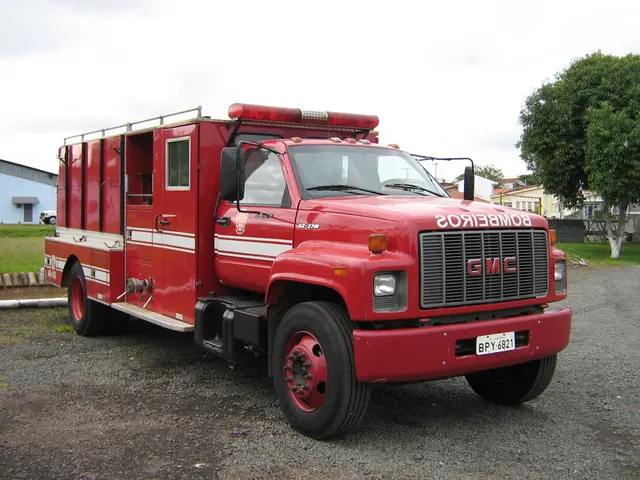NASA Requires Lunar-ready Gloves and Footwear to Endure Icy Moon Temperatures
Revised NASA's Cold-Weather Lunar Odyssey
Fancy frostbite-free fun on the moon? You bet your booty! NASA is prepping its astronauts for a cozy lunar adventure, focusing on the frigid, shadowy territories of the lunar south pole. To make sure our space-dwellers don't turn into popsicles during the Artemis 3 mission, they're putting future spacemen's gloves and boots to the test in a chilly cryogenic chamber nicknamed CITADEL.
If CITADEL sounds like a fancy resort, think again! This four-feet-tall, five-feet-wide space spectacle, tucked away at NASA’s Jet Propulsion Laboratory, simulates the inky void and punishing cold of the moon's south polar regions. CITADEL was initially designed to vet hardware for uncrewed missions, but it's now got its sights set on humanity's exciting return to the moon.
NASA’s moon-bound explorers need the warmest gear to touch and hold tools without their digits turning to ice cubes. That's why a band of engineers is putting the joints of the next-gen spacesuits to the freeze, evaluating their ability to keep astronauts snug and toasty while navigating the moon's treacherous, permanently shadowed zones.
In a statement, Zach Fester, a mastermind on NASA's Advanced Suit Team, spilled the beans, "We want to nail down the risks for our astronauts venturing into the permanently shadowed realms, with gloves and boots being crucial, as they're our space-dwellers' direct connection to the frozen lunar landscape."
Equipped with four load locks, infrared cameras, and a robotic appendage for the ultimate hands-on testing, CITADEL takes days to chill out to temperatures even colder than your average Antarctic winter (-370 Fahrenheit, or -223 Celsius). Rackin' up the electric bill like a boss, CITADEL can only be opened once it's reached its desired low temperatures, re-igniting the cooling process.
CITADEL's frigid trials aren't as harsh as those of the past, where astronauts would slide their mitts into a piping-cold glove box and hold onto miserable objects until their fingers froze to a cool 50 degrees Fahrenheit. Thankfully, the armored manikin hands and feet, lined with fluid loops and dozens of temperature and heat flux sensors, are taking center stage. This superior equipment measures up the limits of gloves and boots without the need for actual human volunteers.
The frigid lunar south pole – home to dark craters and, possibly, water ice – demands a safety net of futuristic spacesuits worthy of a sci-fi flick. Luckily, the launch of Artemis 3 in 2027 will visionary astronauts strutting their stuff in stylish, new moon-suits, a collaboration between NASA and Axiom Space.
Prada, the fashion gurus, have lent their expertise to create dashing designs for the lunar landscape. But it's not just about fashion; this six-armed collaboration boasts superior mobility, added protection, and unprecedented liveliness for the astronauts on their celestial capers. So, buckle up as we beam a fresh fashion sensibility into the cosmos!
CITADEL's recent tests have revealed that the current crop of gloves doesn't quite cut the cold when it comes to the lunar south pole. The boots haven't had their final evaluation yet. Fingers crossed that, by the time the astronauts set foot on the moon in 2027, there'll be a better-than-ever chance of survival amidst the frosty fascination of our nearest celestial neighbor!
- The future of space exploration, such as the Artemis 3 mission, relies heavily on the development of technology like spacesuits tested in NASA's cryogenic chamber CITADEL.
- With the return to the moon, NASA is focusing on ensuring astronauts' health-and-wellness, particularly their ability to withstand the extreme cold of the lunar south pole and its shadowy territories.
- Technology in the form of advanced spacesuits, a collaboration between NASA and Axiom Space, will protect astronauts during the Artemis 3 mission, allowing them to explore the space-and-astronomy of the lunar south pole safely.
- The latest tests on gloves in CITADEL have shown improvement in technology is necessary to ensure astronauts survive the frigid temperatures and maintain their connection to the lunar landscape during future space missions.




